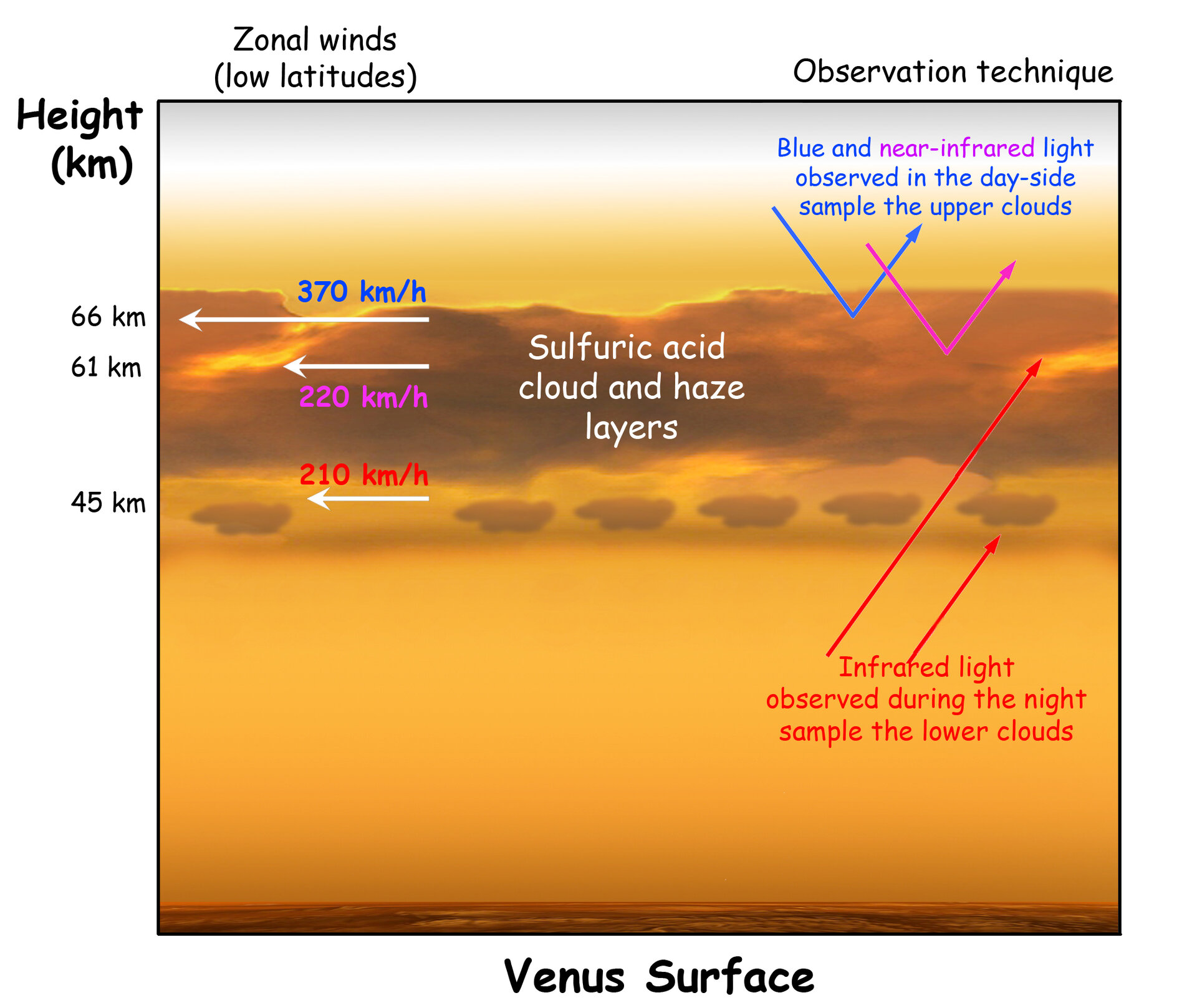9.5: Planetary Atmospheres
( \newcommand{\kernel}{\mathrm{null}\,}\)
 The atmosphere of Venus.
The atmosphere of Venus.
https:/www.esa.int/ESA_Multimedia/Images/2008/09/Studying_the_winds_on_Venus;
9.5.1 Atmosphere of Venus
Mercury has no detectable atmosphere; it is too hot, too small, and too close to the Sun. In contract, Venus has an extremely dense atmosphere. The outer clouds are similar in temperature to Earth, and it was once thought that Venus was a “jungle” planet. We now know that its surface is hotter than Mercury’s; hot enough to melt lead. The atmosphere of Mars is similar to Venus in composition, but very thin. The Earth is the only terrestrial planet with atmosphere consisting mostly of nitrogen and oxygen.
At formation, planets had primary atmosphere—hydrogen, helium, methane, ammonia, water vapor—which was quickly lost due to the high temperatures and the fact that most of these gases are very light. Over time, Venus, Earth, and Mars developed secondary atmospheres containing water vapor, carbon dioxide, sulfur dioxide, nitrogen. Secondary atmospheres come from volcanic activity releasing these gases from the planet’s interior.
Earth now has a tertiary atmosphere, 20 percent oxygen, due to the presence of life. Oxygen is a highly reactive gas. It reacts with other elements to compounds such as water, carbon dioxide, iron oxides, and silicates. Without photosynthetic organisms releasing oxygen into the atmosphere, Earth’s atmosphere would eventually lose its oxygen.
Earth has a small greenhouse effect. Gases such as carbon dioxide and water vapor trap some of the Sun’s energy near the surface, giving the Earth a comfortable (for us) surface temperature. Venus has a much thicker and denser atmosphere that gives it a runaway greenhouse effect has resulted in its present surface temperature of 730 K, the highest surface temperature of any planet in the Solar System. On Earth, much of the carbon dioxide was dissolved in the oceans and then incorporated into the crust while photosynthetic organisms released oxygen, creating the atmosphere we have today. On Venus, the oceans evaporated, releasing the carbon dioxide back into the atmosphere. Without any significant sink for carbon dioxide, Venus’ atmosphere became thicker and its greenhouse effect increased dramatically.
9.5.2 Atmosphere of Mars
In contrast, Mars, lacking a magnetic field, had no protection from the solar wind. Combined with Mars’ low gravity, the solar wind caused Mars to lose much of its atmosphere. Mars continues to lose gas from its atmosphere to this day. As a result, even those Mars’ atmosphere, like that of Venus, is mostly carbon dioxide, it has a very small greenhouse effect, making a cold, dry world.
 Compared to Earth and Venus, Mars has a very thin atmosphere.
Compared to Earth and Venus, Mars has a very thin atmosphere.
https:/www.pikist.com/free-photo-vfexc;




